Kenny Schachter
In the Trenches of the Great Crypto War, Kenny Schachter Says of the Coming NFT Carnage: Bring It On.
Our columnist is not afraid of the whole non-fungible craze getting razed to the ground.
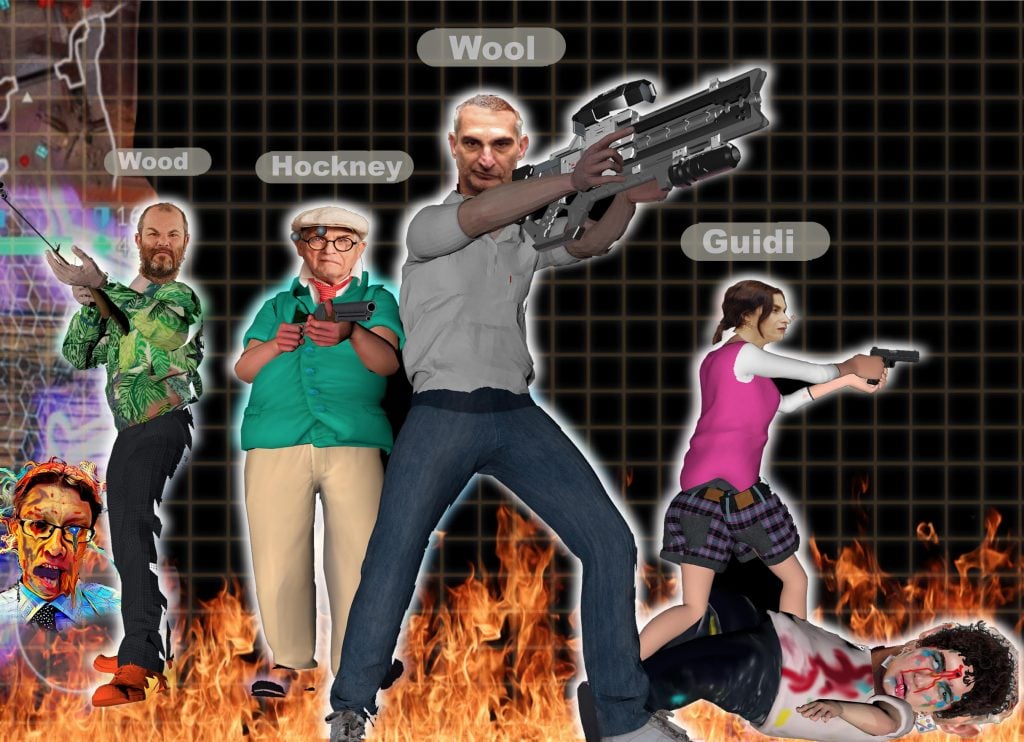
Our columnist is not afraid of the whole non-fungible craze getting razed to the ground.

Kenny Schachter

According to the BBC magazine History Extra, World War I was referred to as the “Great War” because it “carried echoes of Armageddon, the biblical Great Battle of Good and Evil to be fought at the end of Time. It was therefore sometimes referred to as ‘the Great War for Civilization.’” Today, we are in the trenches of an altogether different kind of battle: the Great NFT War. Random assaults are being meted out by sources far and wide, from the American Socialist magazine Jacobin article “NFTs Are, Quite Simply, Bullshit” by Luke Savage to the very non-socialist, private-plane-flying painter Christopher Wool.
The appropriately named Mr. Savage writes of what he refers to as “Non-Fungible Bullshit” (forget NFTs, now we have NFBs!): “NFTs are emblematic of capitalism’s growing retreat from productive activity—and the wealthy’s desire to extend their dominion into the digital ether. They’re worse than useless. You can’t, in other words, actually hold it in your hands like a poster or painting…. [They are] a new and more expansive kind of post-materialist commodification.” Speaking of stuff you can’t hold in your hand like a poster—admittedly the definitive litmus test of exceptional art—I guess he’s no fan of videos by artists from Vito Acconci to Gretchen Bender to Bill Viola. Or, likewise, Steve McQueen’s epic body of filmic works (which would actually make for some really cool NFTs, unlike the vacuous NFTs that Damien Hirst is putting out along with his endless splatter art).
Christopher Wool was equally skeptical on the subject when quoted last month in the New Yorker’s “When N.F.T.s Invade an Art Town”: “It sounds like you’re talking about art without aesthetics.” Rich coming from the painter of stenciled text and blurry blobs of washed away silkscreen inks. Which reminds me that my ex-pal Inigo Philbrck, who was a prominent market maker for Wool’s work (before he delved into the land of Anna Delvey-esque criminality), recently wrote a letter from Brooklyn’s Metropolitan Detention Center to a former auction executive I know that laid the groundwork for a rebound in both his dealing escapades and Wool’s auction market by the time he exits prison in 10 years.
Multimedia artist extraordinaire and all around avant-gardist Laurie Anderson weighed in on NFTs in, of all places, the Financial Times(!): “In the ’80s, it started being more about money. I thought I was joining the art world, but I was really joining the art market and it’s just very—you know—now everything is about NFTs,” she says. “They’re excited about the money. Which is OK. But it’s about the market, with the cover of it being about the art.” I know plenty of struggling NFT artists who wish it was more about the money.
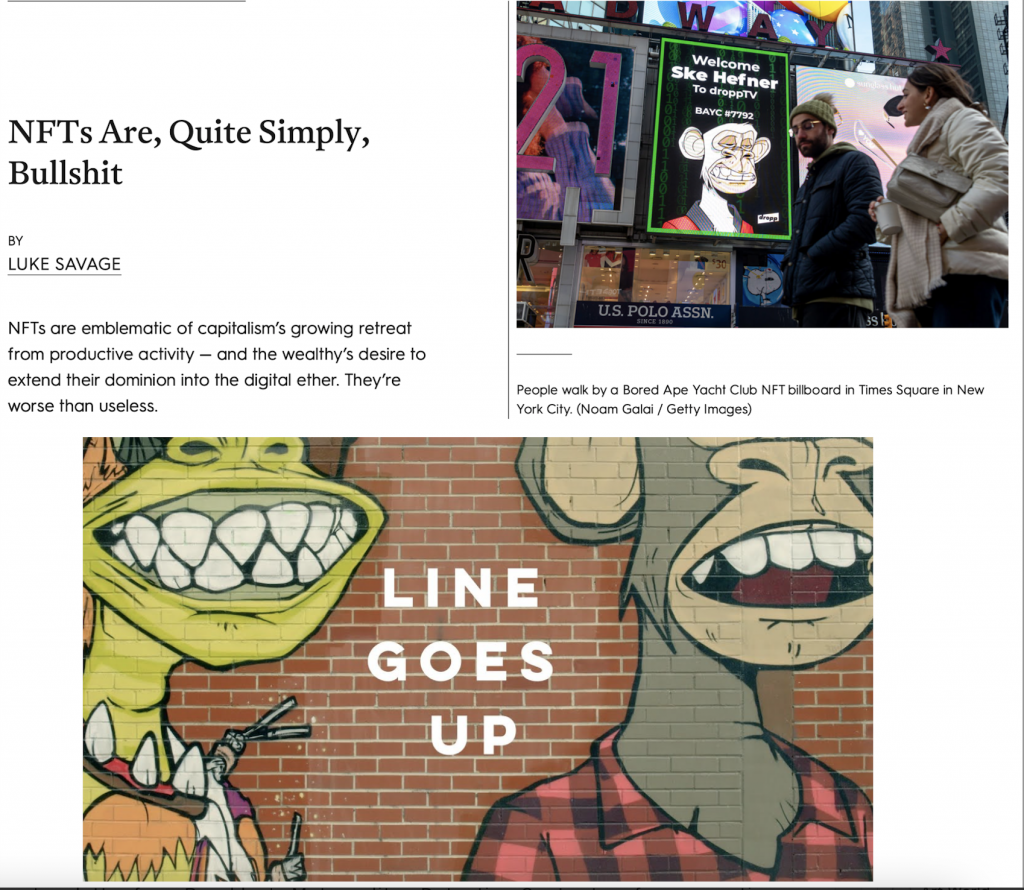
If the Bogeyman is a mythic creature used by adults to frighten children into good behavior, the Bored Ape Yacht Club is the NFT equivalent, used to frighten rich people out of millions of dollars. Courtesy of Kenny Schachter.
To the already burgeoning list of hysterical NFT alarmists that includes stalwarts David Gerard of the Attack of the 50 Foot Blockchain newsletter and Artnet News contributor Amy Castor now add Dan Olson, whose YouTube diatribe “Line Goes Up—The Problem With NFTs” is a wholesale indictment of crypto and NFTs that has racked up an impressive 5,114,600 views in a matter of a few short weeks. I would attempt to encapsulate Olson’s vehemence on the issues, but every time I tried to slog through the marathon, two-hour-18-minute-and-32-second opus I fell into a deep state of REM sleep. So, at the very least, though I don’t subscribe to the polemics of his position, I highly recommend it as an insomnia cure. By the way, Olsen is shilling his obdurate anti-NFT views for profit on YouTube same as any hungry NFT star is selling their crypto-art enthusiasm—and he’s going to make a fortune in the process.
Blaring headlines are all the rage in newspapers across the globe—just take this hyperbolic example in the Guardian: “Huge mess of theft and fraud: artists sound alarm as NFT crime proliferates.” In the piece, which I happen to be quoted in, the author laments that the digital marketplace for NFTs grew to an estimated $22 billion last year (it’s actually closer to $40 billion, they should splurge on some fact-checking), but artists and platforms still face increasing challenges monitoring stolen art. In defense of these assertions, the Guardian highlights that “Aja Trier, a Texas-based artist who has found viral fame for painting riffs on Van Gogh’s Starry Night featuring various breeds of dog, said she discovered 87,000 NFTs based on images of her work for sale on OpenSea, many of them priced at $9.88 each.” Even that’s too much if you ask me. Plopping painted dogs into hijacked versions of Van Gogh’s Starry Night as one’s artistic calling and then having the audacity to complain about the thefts of her theft—can you make up anything dumber than this? I don’t think so.
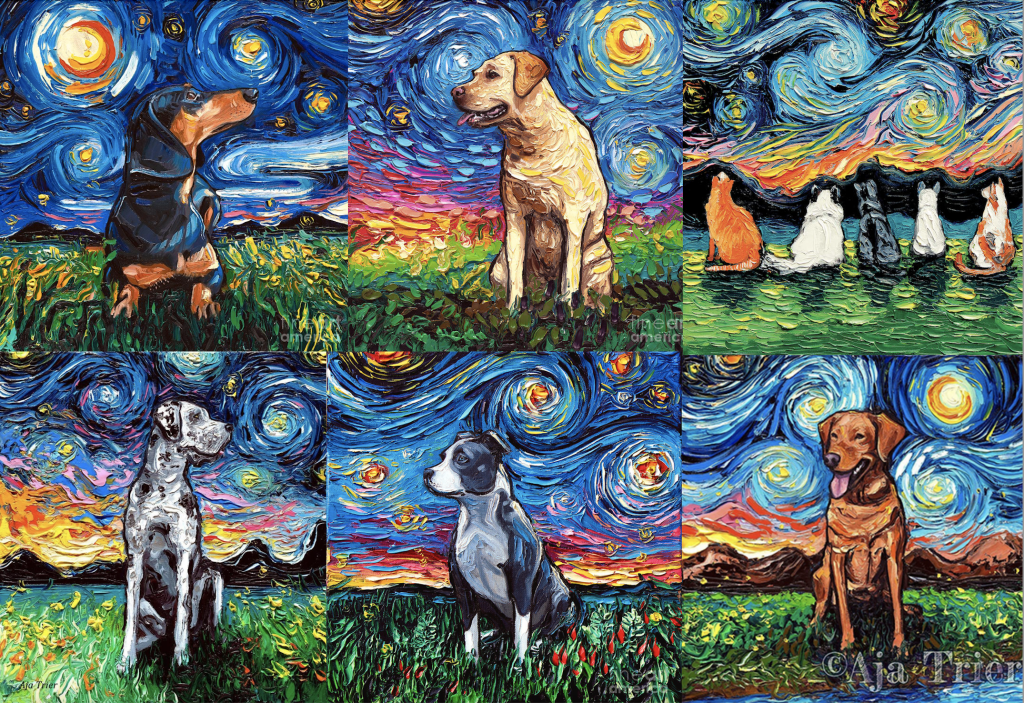
Hard to take Aja Trier’s whining about copyright infringement for her copyright infringements seriously. Why anyone would bother buying her crap in first instance is what’s really tragic. Courtesy of Kenny Schachter.
The gratuitous condemnations are getting personal too, in my case, anyway. After Jerry Saltz kindly posted a quote my from my last Artnet article on his Instagram feed it unleashed a torrent of anti-NFT vitriol, including this gem from Adrian Pelegrin, whose profile reads “Long-exposure photographic kinescopes, images of images, shadows from a managed world” (which I might add are as dull and derivative as they sound) and who wrote: “Kenny is an art collector/dealer, not an artist. Everybody can buy and sell art, you just need a bunch of money.” Dearest Adrian, I would qualify that with the statement that, yes, anyone can buy art, but selling it is a bitch, trust me—and, to be more accurate, harder than making it. I’m 60 years old and have been producing art since I was an overweight, isolated child in the suburbs of Long Island. In all those years, I never made a living from my work—in spite of never letting up—until now. But thanks, anyway.
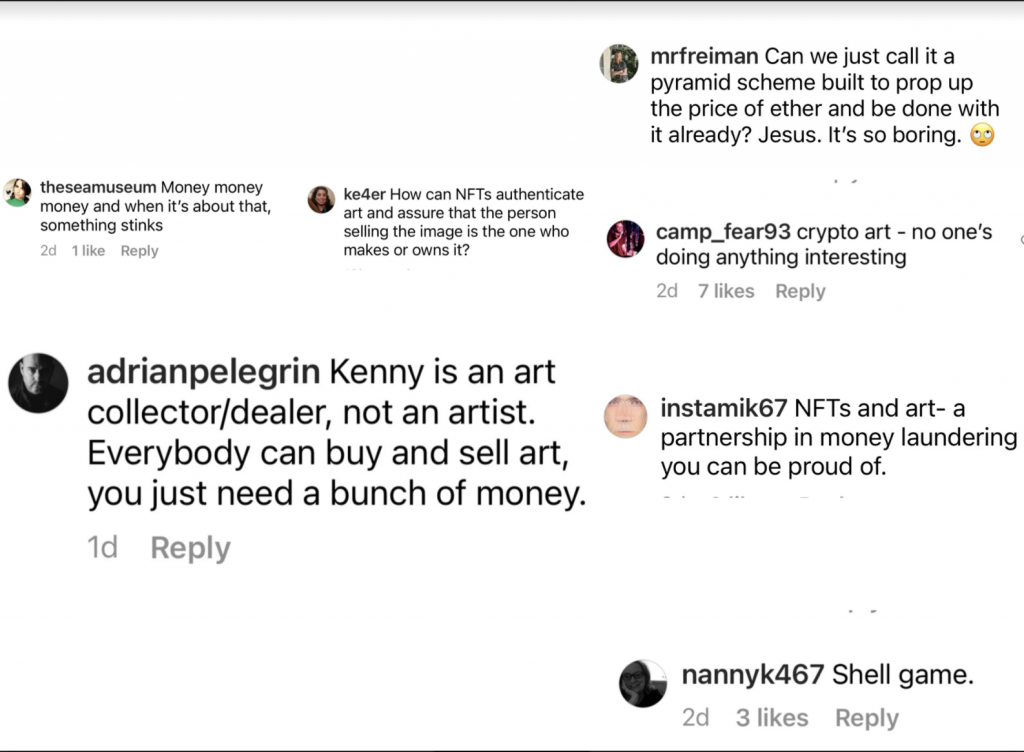
Who let the trolls out? Who? Who? Who? But they are out in full force in Jerry Saltz’ Instagram comments after he quoted my last NFT article. Courtesy of Kenny Schachter.
As far as the tedious admonitions that NFTs are barely camouflaged substitutes for currencies (and tell me that trendy paintings by near-teens aren’t), the value of cryptocurrencies has tanked by 60 percent of late, albeit followed by a modest rebound. Bitcoin and ETH values are more uncertain than the fate of Ukrainian President Zelensky; there are surely better ways to make money without the concomitant risk inherent in the ridiculously raucous NFT and crypto markets. But if you happen to possess an outsized appetite for disaster, you may want to take these helpful hints from Coinbase to heart: “1. Don’t fall prey to FOMO and FUD [fear, uncertainty and doubt]… 2. Set clear goals, diversify, and only trade within your means… 3. [Adopt] HODLing [crypto-speak for holding investments] and long-term thinking… 4. Be ready to ride out the dip or take profits…. [and] 5. See the opportunities.” Admonitions to live by (eye-roll).
Shortly after I started my art career in late 1980s there was quickly a deep (very deep) recession that began in 1990 and lasted for over half decade. Just to think of it reassures me about the current ETH drop. The New York Times’s Roberta Smith succinctly summed it up in an 1991 article I often refer to in my lectures: “At a time when SoHo’s eulogy has been written more than once, New York City’s primary contemporary art gallery area is showing new signs of life.” In demoralized times, the most hardcore artists and dealers—the ones in it for the right reasons, love and passion for art—come out of the woodwork and do projects not only because they want to but because some unseen force (not the market) compels them to. And a shakeout like that happening in the NFTs universe would be welcomed. Vacillating markets are never a deterrent from what gives meaning to our lives.
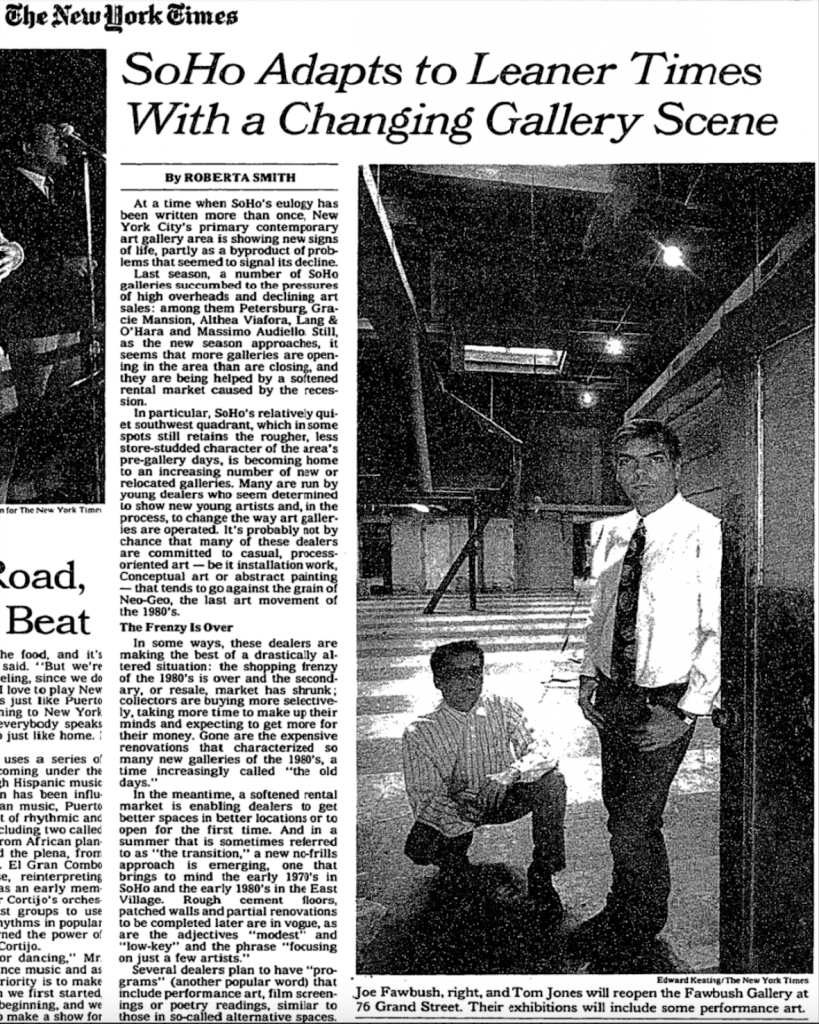
It’s about time for the art world to adapt! NFTs aren’t going anywhere now or in the future, sorry folks. Speaking of which, “NFTism Now & Forever” is the name of my new course this semester at NYU! Courtesy of Kenny Schachter.
In the HBO documentary The Price of Everything, auctioneer Simon de Pury said that he was glad art was expensive because otherwise it wouldn’t be valued and preserved. I would argue the opposite, rather—that it’s the good but not costly art that that’s most in need of nurturing and protecting to ensure its future. On another note, I am fine with the excessively stupid prices some crappy NFTs have garnered in the past year as it has opened the world’s eyes to the overall significance of digital art, presently enjoying an unprecedented renaissance. Even if the entirety of crypto and NFTs crashed and burned tomorrow (not a farfetched notion at all), nothing would change in my life. Admittedly I’d be a bit bummed, but hardly surprised. Sure, there’d be fewer podcast invites and I’d have to go to Frieze in Los Angeles this week, which I am gratefully skipping to teach one of the first (if not the first) NFTism classes at New York University’s Gallatin School. What I am certain of is that out of the ashes, like a phoenix rising, another version of a digital art marketplace would emerge. Like a genie out of the bottle, the ETH is in the ether.
Oh, and a final thought, from someone up to my ears in tech art, can someone please help me to get my printer to work?